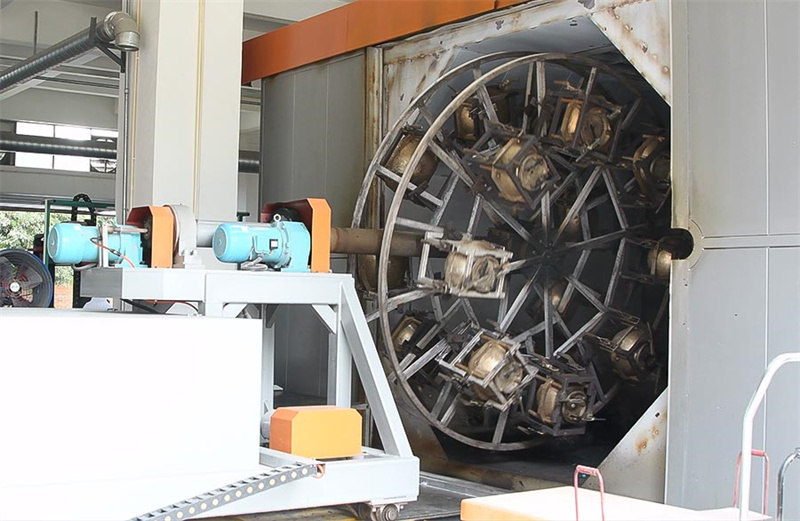What Methods are Commonly Used to Heat the Rotational Molding Machines
 Mar 05,2024
Mar 05,2024

What Methods are Commonly Used to Heat the Rotational Molding Machines
Heating is a pivotal step in rotational molding, as it is responsible for melting the plastic material and ensuring it adheres correctly to the walls of the mold. A variety of heating methods are used in rotational molding machines, each offering distinct advantages and tailored for specific applications. This article explores the various heating techniques used in rotational molding process and provides guidance on their effective utilization.

1. Gas-Fired Heating
Gas-fired heating is a common method used in rotational molding machines. Natural gas or propane is typically used as the fuel source. Gas-fired heating systems are known for their high heat output and quick heat-up times. They can maintain consistent temperatures throughout the molding cycle, making them suitable for a wide range of applications. This method is cost-effective and easy to operate, making it a popular choice in the industry.
2. Electric Heating
Electric heating systems use resistance heaters or infrared heaters to generate heat and melt the plastic material. Electric heating offers precision and control, allowing for accurate temperature regulation. It is a clean and efficient heating method, with no combustion by-products. Electric heating is particularly suitable for applications where precise temperature control is required, such as in the production of sensitive electronic components or medical devices.
3. Infrared Heating
Infrared heating is another method used in rotational molding machines. Infrared heaters emit radiant heat that is absorbed by the plastic material, heating it quickly and uniformly. This method is beneficial for achieving faster cycle times and reducing energy consumption. Infrared heating is often used in combination with other heating methods and is particularly effective for thicker sections or areas with complex geometries.
4. Hot Air Heating
Hot air heating systems use a blower to circulate hot air across the mold, heating it evenly. This method is often used in combination with other heating methods and can be particularly effective for larger molds or products with varying wall thicknesses. Hot air heating is a versatile method that can be easily adjusted to meet the specific needs of different products and production requirements.
5. Effective Heating Practices
To ensure effective heating in rotational molding machines, several practices should be considered:
a. Temperature Control: Accurate temperature control is crucial for achieving consistent material flow and uniform wall thickness. Advanced control systems, such as computerized control panels and software, can be utilized to monitor and adjust machine parameters, including temperature.
b. Heating Element Placement: The placement of heating elements should be carefully considered to ensure uniform heat distribution across the mold. Strategic placement can minimize hotspots and ensure that the entire mold is heated evenly.
c. Insulation: Proper insulation of the mold and oven is essential to maintain heat efficiency and reduce energy consumption. Insulation helps retain heat within the mold, reducing the need for continuous heating and improving overall cycle times.
d. Mold Pre-Heating: Pre-heating the mold can help achieve faster cycle times and improve material flow. Pre-heating the mold to a lower temperature can reduce the time required to reach the molding temperature, enhancing production efficiency.
The choice of heating method depends on factors such as product requirements, production efficiency, and cost considerations. By selecting the appropriate heating method and implementing effective heating practices, rotational molding manufacturers can optimize their rotational molding processes and achieve superior product quality and production efficiency.
At Light Venus, we excel in crafting a broad range of bespoke rotomolded parts and components, including those with intricate designs that demand precise dimensions and superior aesthetics. Our state-of-the-art rotational molding factory is ISO9001 and ISO14001 accredited, ensuring the highest standards of quality and environmental management. To explore how we can bring your custom rotational molding needs to life, please feel free to reach out to us.
 Tel: 0086-13632687993
Tel: 0086-13632687993  Email: roto@lightvenus.com
Email: roto@lightvenus.com

 Home
Home How to Design Wall Thickness Range for Rotomolded Products
How to Design Wall Thickness Range for Rotomolded Products  You May Also Like
You May Also Like



 Tel
Tel
 Email
Email
 Address
Address








